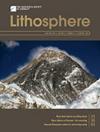Formation of the Great Bend and Enhanced Quaternary Incision of the Upper Yangtze River: New Insights from Low-Temperature Thermochronology and Tributary Morphology
IF 1.8
4区 地球科学
Q3 GEOCHEMISTRY & GEOPHYSICS
引用次数: 0
Abstract
The occurrence of a sharp turn along the upper course of the Yangtze River is referred to as the “Great Bend” and represents a large-scale drainage reorganization in response to the surface rise of the Tibetan Plateau. However, the timing and mechanism of the formation of the Great Bend remain disputed. In this paper, we report new (U–Th)/He and apatite fission track thermochronological data from the deep river valley in the Great Bend area of the southeastern margin of the Tibetan Plateau. Compared with the adjacent Jianchuan Basin, two phases of younger rapid cooling for the Great Bend area are identified based on thermal-history modeling, namely, Miocene (ca. 17 to 11–8 Ma) and Quaternary, with the former phase being contemporaneous with the formation of the anticline in the Tiger Leaping Gorge. Progressive increases in the normalized channel steepness (ksn) and the degree of river-valley incision with increasing distance downstream for tributaries of the Yangtze River in the Tiger Leaping Gorge indicate that river rerouting and formation of the Great Bend occurred during the Miocene. Samples located at the bottom of the Tiger Leaping Gorge also reveal a phase of rapid cooling since ca. 1.9 Ma, with an exhumation rate of 1.5 ± 0.2 mm/year. We hypothesize that enhanced Quaternary exhumation in the southeastern margin of the Tibetan Plateau occurred mainly within the narrow region between the Sichuan Basin and the Eastern Himalayan Syntaxis, corresponding to an episode of widespread extensional deformation superimposed above middle- to upper-crustal flexure in this region.长江上游大拐弯的形成与第四纪侵蚀作用的增强:低温热时学及支流形态学的新见解
长江上游出现的急转弯被称为 "大拐弯",是青藏高原地表隆起引起的大规模排水系统重组。然而,大拐弯形成的时间和机制仍存在争议。本文报告了青藏高原东南缘大拐弯地区深河谷的(U-Th)/He和磷灰石裂变轨迹热年代学新数据。与邻近的剑川盆地相比,根据热史模型确定了大拐弯地区较年轻的两个快速冷却阶段,即中新世(约17至11-8Ma)和第四纪,前一阶段与虎跳峡反斜的形成同时。虎跳峡长江支流的归一化河道陡度(ksn)和河谷切入程度随下游距离的增加而逐渐增加,表明河流改道和大拐弯的形成发生在中新世。位于虎跳峡底部的样本也显示了自约 1.9 Ma 开始的快速冷却阶段。位于虎跳峡底部的样本还显示,自约 1.9 Ma 开始,虎跳峡处于快速冷却阶段,隆升速度为 1.5 ± 0.2 mm/年。我们推测,青藏高原东南缘第四纪隆升主要发生在四川盆地与东喜马拉雅山系之间的狭长区域,与该区域中、上地壳褶皱叠加的大范围伸展变形相对应。
本文章由计算机程序翻译,如有差异,请以英文原文为准。
求助全文
约1分钟内获得全文
求助全文
来源期刊

Lithosphere
GEOCHEMISTRY & GEOPHYSICS-GEOLOGY
CiteScore
3.80
自引率
16.70%
发文量
284
审稿时长
>12 weeks
期刊介绍:
The open access journal will have an expanded scope covering research in all areas of earth, planetary, and environmental sciences, providing a unique publishing choice for authors in the geoscience community.
文献相关原料
| 公司名称 | 产品信息 | 采购帮参考价格 |
|---|
 求助内容:
求助内容: 应助结果提醒方式:
应助结果提醒方式:


